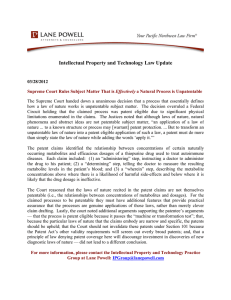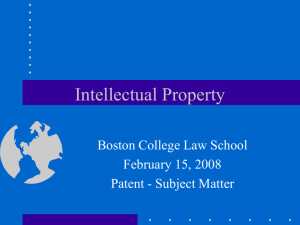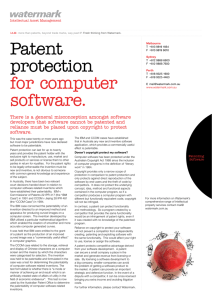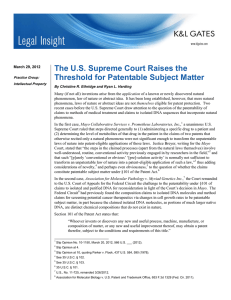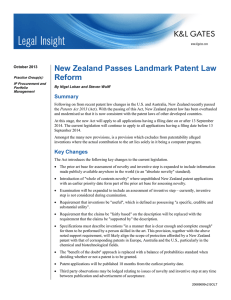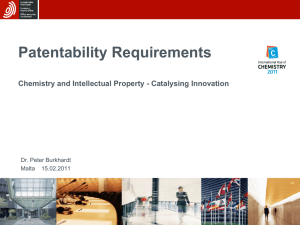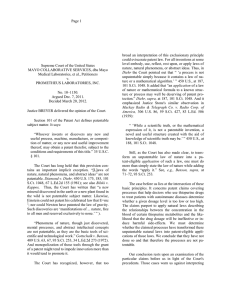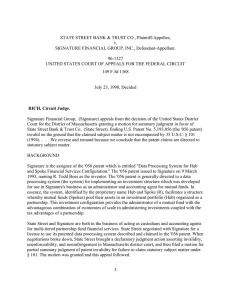BUSINESS METHOD PATENTS A New Weapon In E-Commerce
advertisement
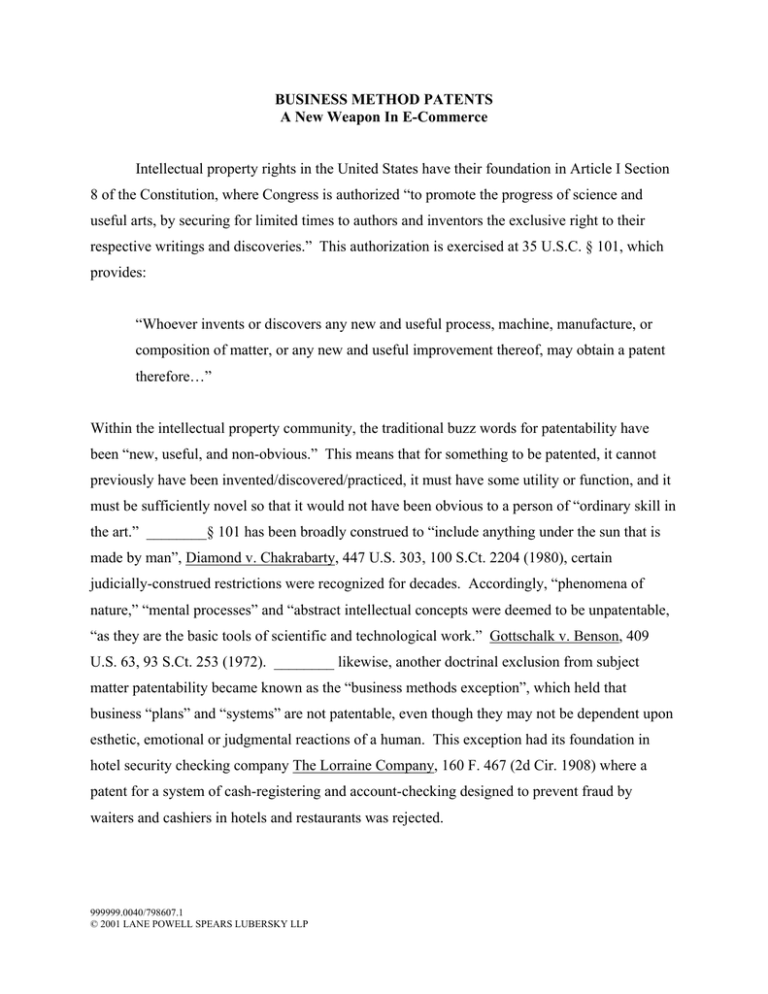
BUSINESS METHOD PATENTS A New Weapon In E-Commerce Intellectual property rights in the United States have their foundation in Article I Section 8 of the Constitution, where Congress is authorized “to promote the progress of science and useful arts, by securing for limited times to authors and inventors the exclusive right to their respective writings and discoveries.” This authorization is exercised at 35 U.S.C. § 101, which provides: “Whoever invents or discovers any new and useful process, machine, manufacture, or composition of matter, or any new and useful improvement thereof, may obtain a patent therefore…” Within the intellectual property community, the traditional buzz words for patentability have been “new, useful, and non-obvious.” This means that for something to be patented, it cannot previously have been invented/discovered/practiced, it must have some utility or function, and it must be sufficiently novel so that it would not have been obvious to a person of “ordinary skill in the art.” ________§ 101 has been broadly construed to “include anything under the sun that is made by man”, Diamond v. Chakrabarty, 447 U.S. 303, 100 S.Ct. 2204 (1980), certain judicially-construed restrictions were recognized for decades. Accordingly, “phenomena of nature,” “mental processes” and “abstract intellectual concepts were deemed to be unpatentable, “as they are the basic tools of scientific and technological work.” Gottschalk v. Benson, 409 U.S. 63, 93 S.Ct. 253 (1972). ________ likewise, another doctrinal exclusion from subject matter patentability became known as the “business methods exception”, which held that business “plans” and “systems” are not patentable, even though they may not be dependent upon esthetic, emotional or judgmental reactions of a human. This exception had its foundation in hotel security checking company The Lorraine Company, 160 F. 467 (2d Cir. 1908) where a patent for a system of cash-registering and account-checking designed to prevent fraud by waiters and cashiers in hotels and restaurants was rejected. 999999.0040/798607.1 © 2001 LANE POWELL SPEARS LUBERSKY LLP The combination of exclusions for “business methods”, “mental processes”, “mathematical formula and algorithms” were combined in the computer age to limit the patentability of computer software. While certain exceptions were recognized, until the Federal Circuit’s mid-1998 decision in State Street Bank and Trust Company v. Signature Financial Group, Inc., 149 F.3d 1368 (F. Cir. 1998), software programs were considered unpatentable. In 1993, Signature Financial Group obtained a patent for a data processing system for implementing an investment structure which was developed for use in Signature’s business as an administrator and accounting agent for mutual funds. The system provided a means for daily allocation of assets between a family of mutual funds which pooled their assets in an investment portfolio organized as a partnership. By using computers and specially-developed software, the system was capable of tracking all the relevant data determined on a daily basis for the family of funds so that aggregate year-end income, expenses and capital gain or losses could be determined for accounting and tax purposes for the entire partnership, and for each individual publicly traded fund. This patented system was given the proprietary name “Hub and Spoke,” where the Spokes were individual mutual funds and the Hub was the collective partnership. Following a challenge by State Street Bank and Trust Company, the U.S. District Court for the District of Massachusetts invalidated the patent under the traditional exceptions for mathematical algorithms, business methods, mental processes, etc. The Federal Circuit reversed the lower court decision and reinstated the patent. In doing so, the court held that computer software programs utilizing algorithms, formula or calculations were not per se unpatentable, nor were business methods, so long as the end operation produced a patentable “useful, concrete and tangible result.” As a result of the State Street Bank decision, software and other e-commerce companies flooded the U.S. Patent Office software and associated e-commerce business method patents. 2 999999.0040/798607.1 © 2001 LANE POWELL SPEARS LUBERSKY LLP
